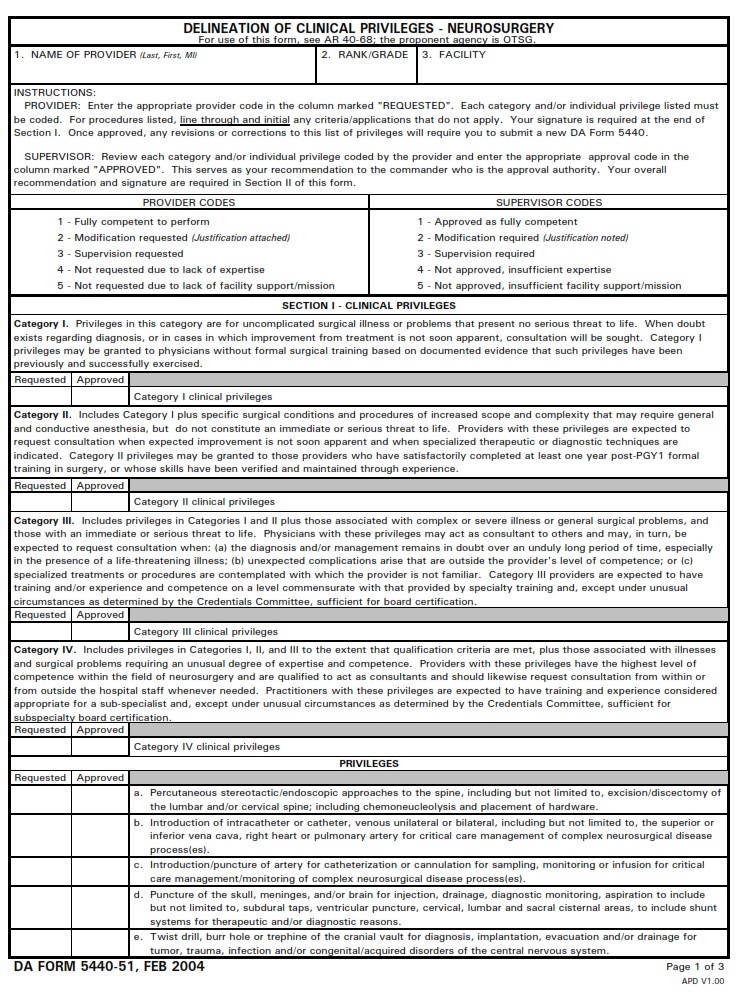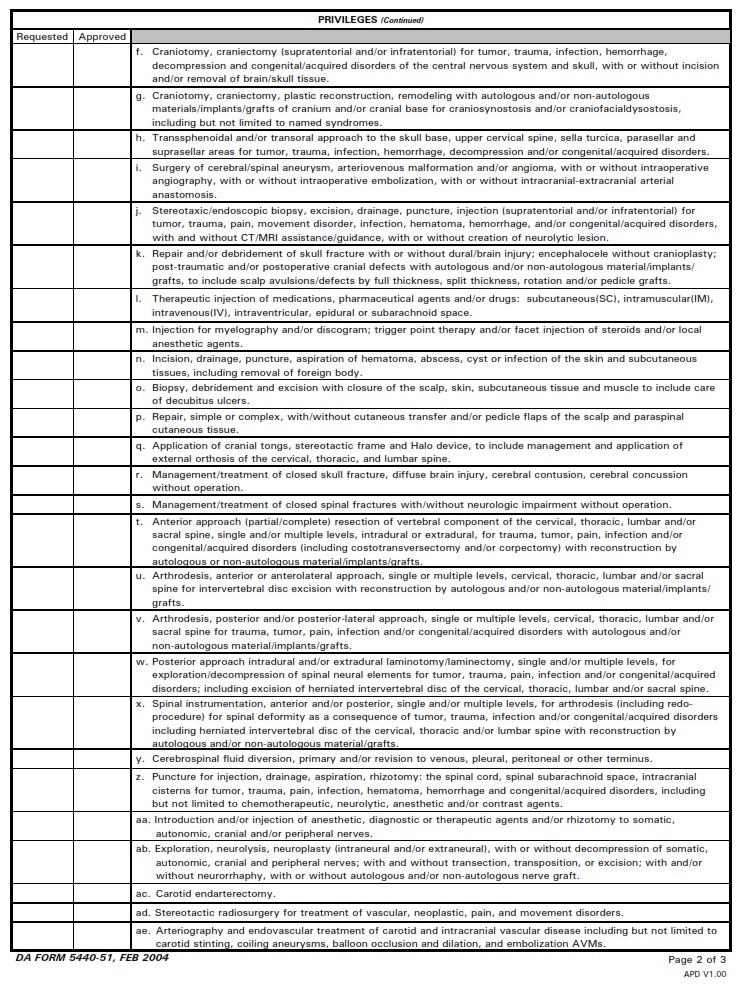Table of Contents
FREE-ONLINE-FORMS.COM – DA Form 5440-51 – Delineation Of Clinical Privileges – Neurosurgery – In the complex world of healthcare, where every decision can mean the difference between life and death, the concept of clinical privileges holds immense significance. Picture a scenario where a surgeon is granted permission to perform intricate procedures or a psychiatrist is authorized to prescribe powerful medications – these privileges are not merely bureaucratic checkboxes, but crucial safeguards ensuring that only qualified professionals wield the power to make critical medical decisions. At the heart of this system lies DA Form 5440-51, a seemingly innocuous piece of paper that carries immense weight in determining who has the authority to provide specific types of patient care. Join us on a journey as we unravel the intricacies and implications of this form, shedding light on its role in safeguarding patient safety and upholding standards of excellence in healthcare practice.
Download DA Form 5440-51 – Delineation Of Clinical Privileges – Neurosurgery
| Form Number | DA Form 5440-51 |
| Form Title | Delineation Of Clinical Privileges – Neurosurgery |
| Edition Date | 2/1/2004 |
| File Size | 47 KB |
What is a DA Form 5440-51?
The DA Form 5440-51 is a crucial document in the medical field that plays a significant role in delineating clinical privileges for healthcare professionals within the U.S. Army Medical Department. This form serves as a detailed record that outlines specific clinical privileges granted to individual providers based on their qualifications, experience, and training. By carefully detailing the scope of practice and limitations for each provider, the DA Form 5440-51 ensures accountability and compliance with established standards of care.
Healthcare facilities rely on the information provided in the DA Form 5440-51 to ensure that clinicians are performing procedures and offering treatments within their defined scope of practice. Additionally, this form helps to maintain patient safety by ensuring that only qualified individuals are authorized to perform certain medical activities. It serves as a valuable tool for both healthcare providers and institutions to uphold high standards of care delivery while aligning with legal and regulatory requirements.
Where Can I Find a DA Form 5440-51?
If you’re in search of the DA Form 5440-51, also known as the Delineation of Clinical Privileges form, your first point of contact should be your healthcare facility’s credentialing office. This office typically manages all forms related to clinical privileges for healthcare professionals. Additionally, you can check with your hospital’s medical staff services or human resources department. In some cases, the form might be available electronically on your organization’s intranet or online portal for easy access and submission.
Another avenue to explore is reaching out to your state licensing board or regulatory agency. They often have resources and guidance on obtaining necessary forms for clinical practice privileges. Don’t hesitate to ask colleagues who have gone through a similar process, as they may have insights on where and how to find the form efficiently. Remember that accuracy and completeness in filling out the DA Form 5440-51 are crucial for ensuring you receive appropriate clinical privileges within your healthcare setting.
DA Form 5440-51 – Delineation Of Clinical Privileges – Neurosurgery
DA Form 5440-51, also known as the Delineation of Clinical Privileges form, plays a crucial role in healthcare settings by outlining the specific clinical privileges granted to medical professionals. This form serves as a roadmap for healthcare providers, detailing the scope of their practice and ensuring that they are qualified and competent to perform certain tasks. It is designed to protect both patients and practitioners by setting clear boundaries and expectations for clinical care.
Completing the DA Form 5440-51 requires careful consideration and attention to detail. Medical professionals must accurately document their education, training, certifications, and experience in order to receive appropriate clinical privileges. This form serves as a valuable tool for healthcare institutions in assessing the competency and qualifications of their staff members, ultimately contributing to the provision of high-quality patient care. By upholding the standards outlined in this document, healthcare facilities can maintain a safe environment for patients while supporting professional development among their staff members.


